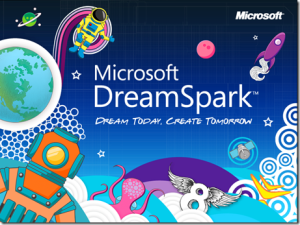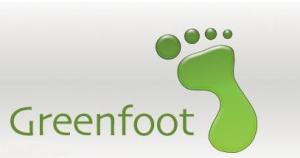Today’s entry into educational technology tools is not simply a web site or single piece of software, it is a licensing plan offered by Microsoft to get professional quality development tools into the hands of students. The program is called Dreamspark and it is the best way to provide real tools for students at a price that any school district can live with.
Many development companies, technology shops, and “just plain businesses” use Microsoft development tools and Operating System software as the foundation of their business models. Given that the shortage of qualified developers and technical workers continues to grow, Microsoft has decided that providing their tools to up and coming young programmers can help alleviate the gap between qualified applications and jobs. They have developed a program that allows students and faculty to have access to their flag ship business products for a tiny fraction of the cost that business pay.
The Dreamspark program is available to qualified and accredited High School and Universities and provides software packages for students and staff to be used for educational purposes. Visual Studio Professional 2013 (and soon 2015), MS SQL Server, Windows Server 2012, and all the various flavors of Windows 8.1 are available for home and school use for around $100 per year depending on your circumstances. These are not crippled academic or “lite” versions, this is the real thing. If your school district can find someone to teach it, Microsoft will provide the tools to build the class. To give an example of the value of this program, one copy of Visual Studio 2013, purchase retail runs about $500. A copy of MS SQL Server standard goes for about $1000, and a full copy of Server 2012 standard, depending on the number of clients and other factors, can run from $500 to more than $2000 per copy. Dreamspark provides all this and more for around $100 per year. The software may be downloaded be each student for use at home via a personalized web store. Essentially there are no limits to the numbers (although I think they cap the install keys at 500). The price is hard to beat.
Many companies are seeing the value of providing professional tools to students who are interested in the learning those products. Adobe Creative Cloud subscriptions for academic use can be had for around $20 per month (the commercial license runs about $50 per month for individual use and $70 a month of businesses). 3D software like 3DS Max and Motionbuilder by Autodesk can be used for free by students on a yearly basis but costs thousands to be purchased for commercial projects. It is sincerely worth your while as an educator to investigate what titles are available for academic discounts. You owe it to your students and your self to see what is available.

 Contacted our local Pearson rep yesterday in order to request an evaluation copy of the
Contacted our local Pearson rep yesterday in order to request an evaluation copy of the